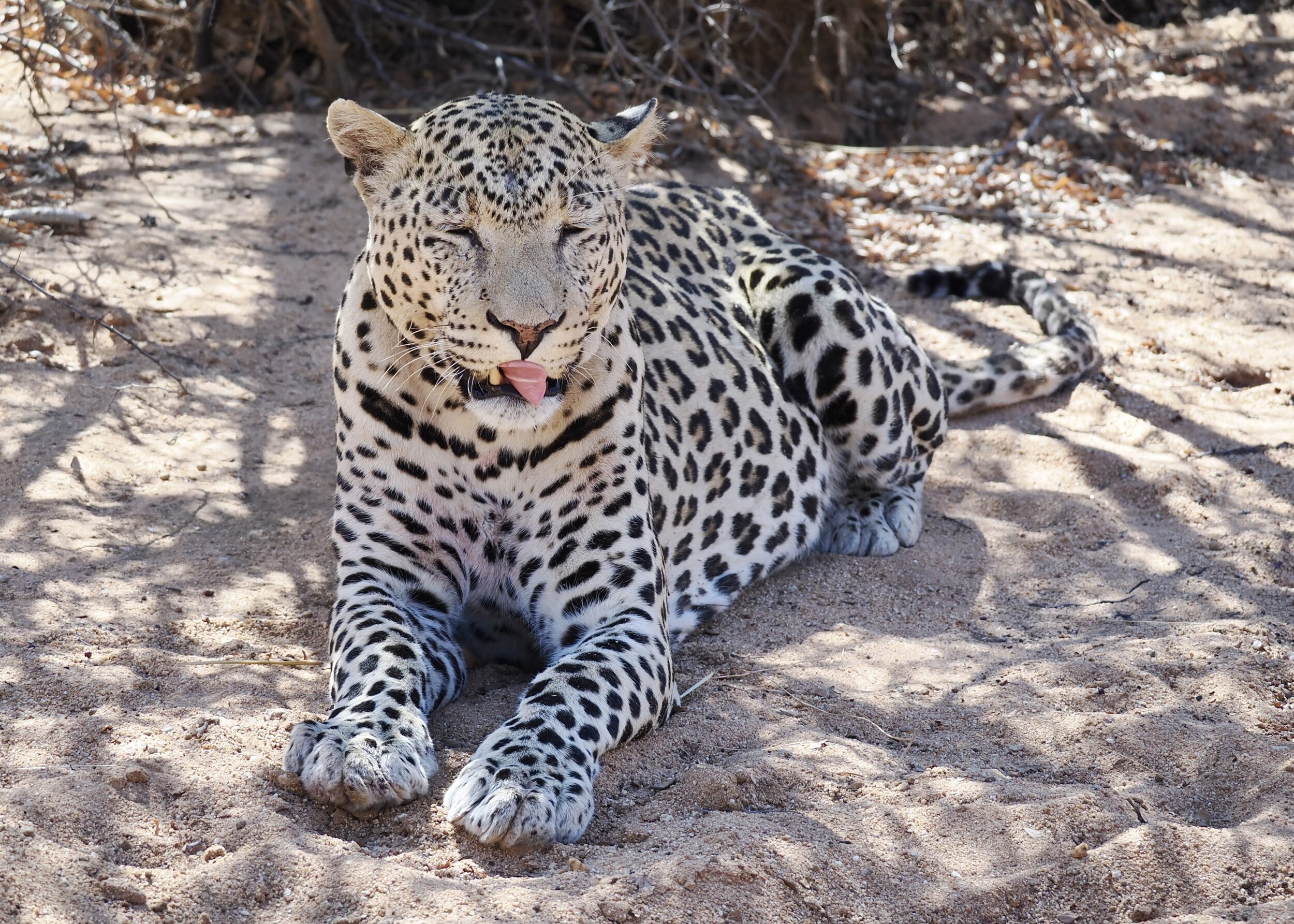…was an extraordinarily close one.
Prior to November 2022 I had never imagined that I would ever find myself so astonishingly near to a wild leopard, let alone that such an experience would prove the least exciting of four leopard encounters, all within a span of about ninety hours.
This post’s photos are in chronological sequence; the first three were taken within a single minute, and the final image’s “moment” occurred a whisker less seven minutes after the first.
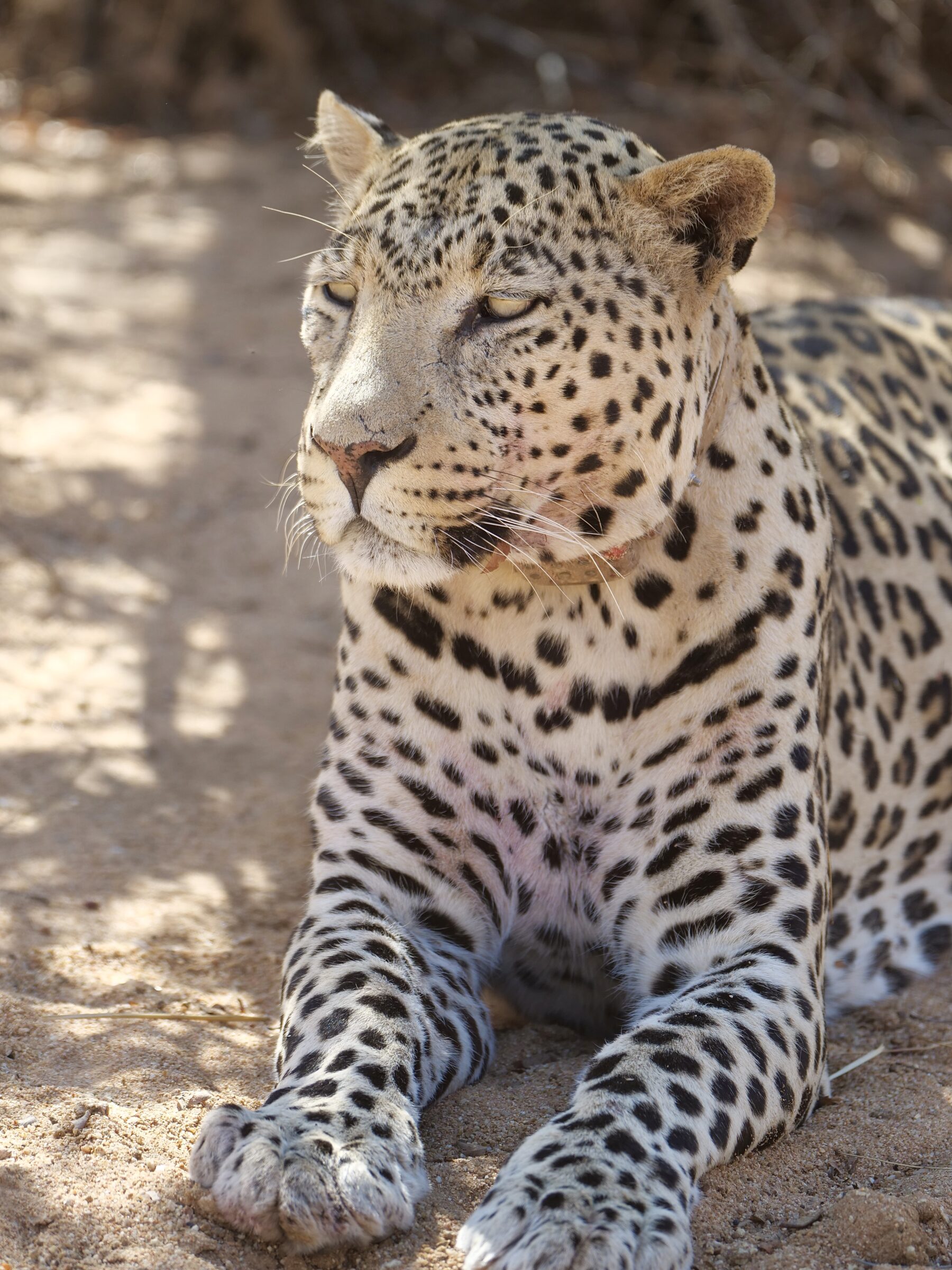
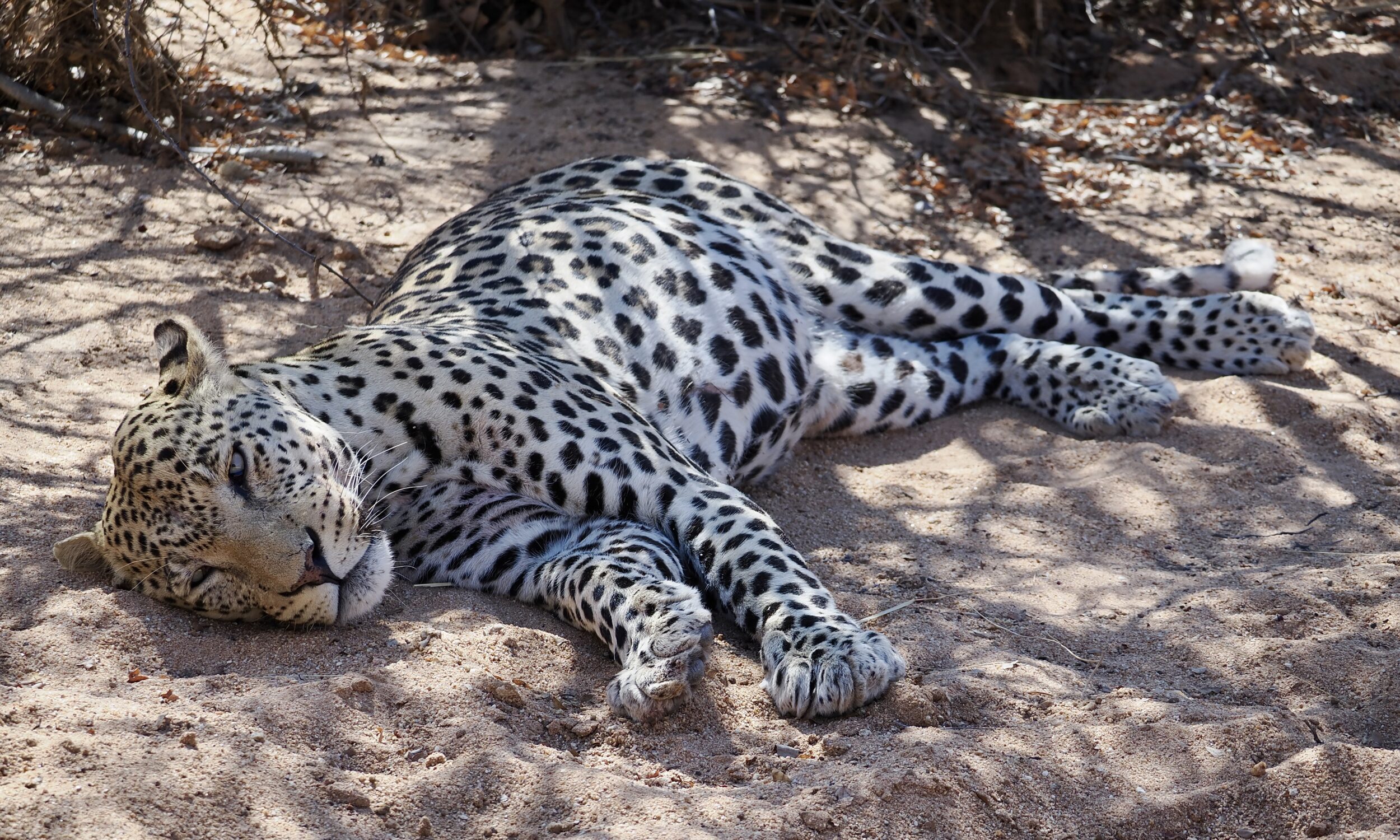
My beloved and I have visited a number of the world’s more splendid, wild places.
We have enjoyed more than a few memorable wildlife experiences, not all of which required passports; Australia’s many natural wonders include a host of astonishing plants and animals which naturally occur only in Australia – often, only within a particular, tiny portion of it.
From 1971 through 2005 I was several times in places where wild leopards were surely present, somewhere nearby.
Unsurprisingly, I did not see any of them.
However, in 2006, in Botswana’s Okavango Delta, I had a close but very fleeting view.
By the time I had managed to convinced the driver/nature guide that I was neither joking nor deluded, the leopard had vanished into the bush. (my beloved was the only other person in the vehicle who saw that leopard)
In 2019 we saw a snow leopard on the Tibetan Plateau, albeit from a distance considerable enough – circa 2 ks – to render (my) photography pointless.
Then, in Namibia in November 2022 we enjoyed four “once in a lucky lifetime” leopard encounters…followed, last month, in India by two more leopard sightings, one of which was also of the “once in a lucky lifetime” kind.
This post’s encounter occurred about seventy minutes after the conclusion of the second of our two amazing encounters with “Lila”, and three days before we happened upon a leopard who was attempting to take a springbok in Etosha National Park.
If you have not already seen the three “Lila” posts, click here.
The Etosha and the Nagarhole leopards are forthcoming Pelican Yoga attractions.
In terms of our lifetime-to-date leopard sightings, this post’s sated, sleepy, unfussed hero was – hands down – the least active, most “boring” individual.
We were far from bored!
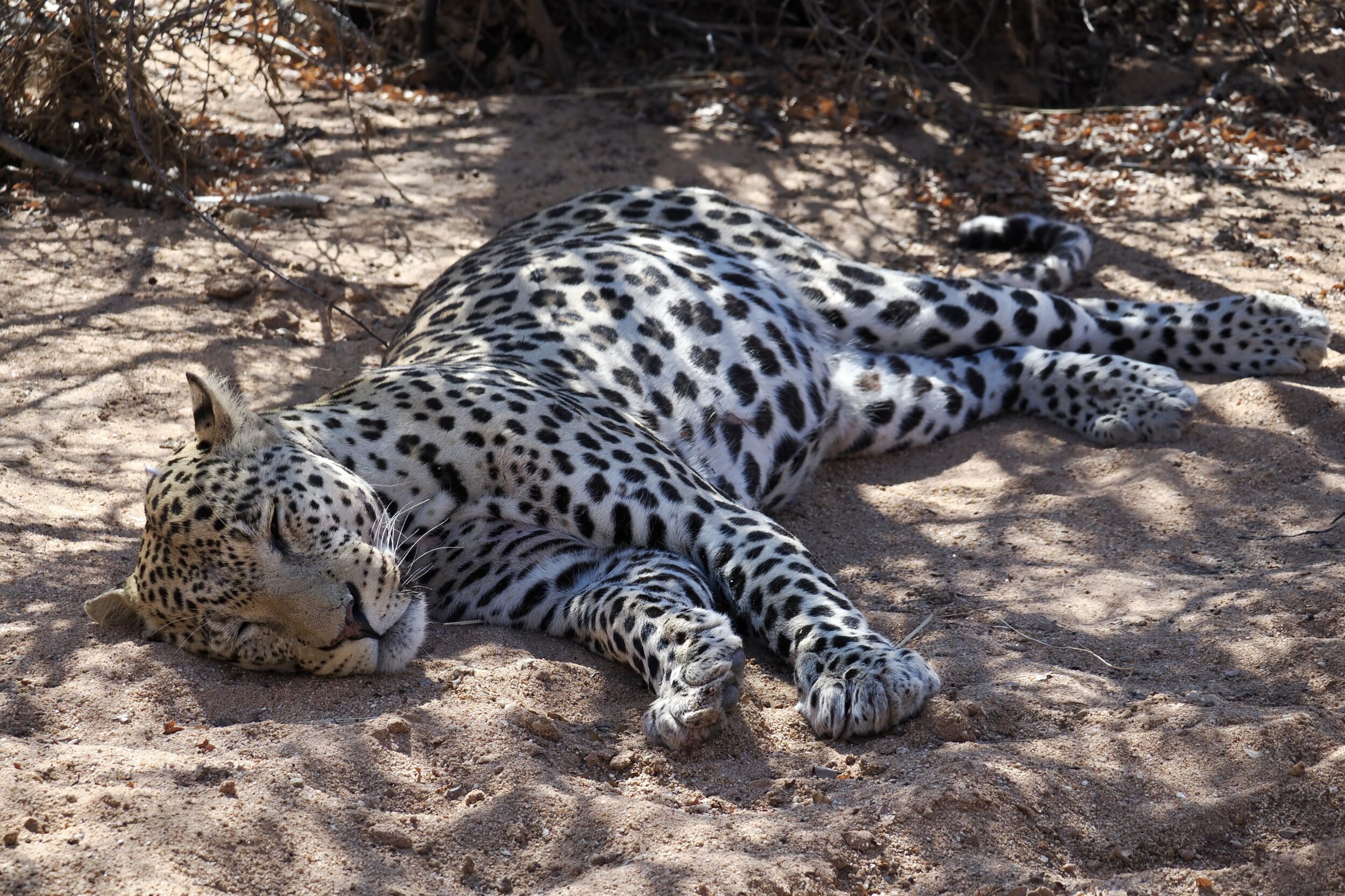
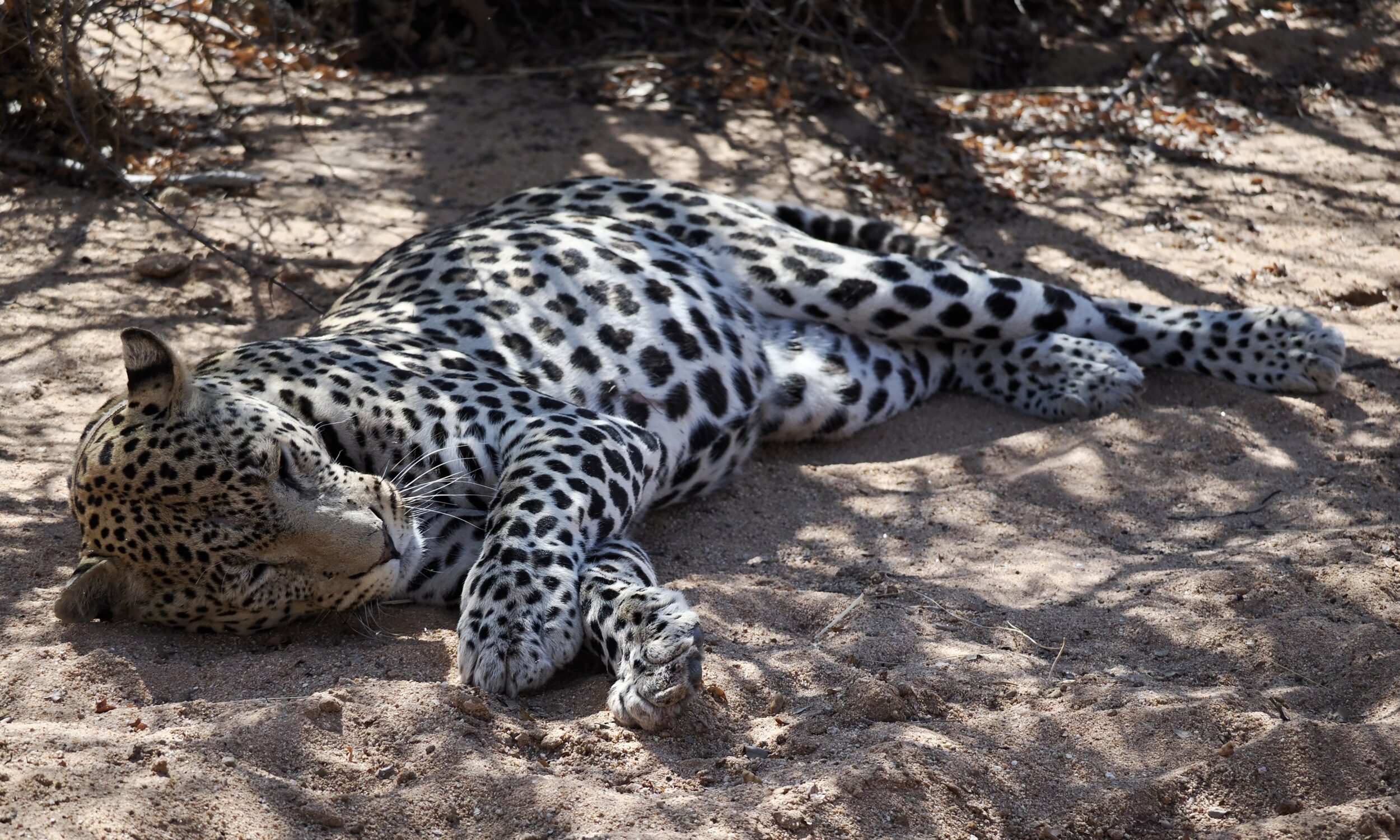
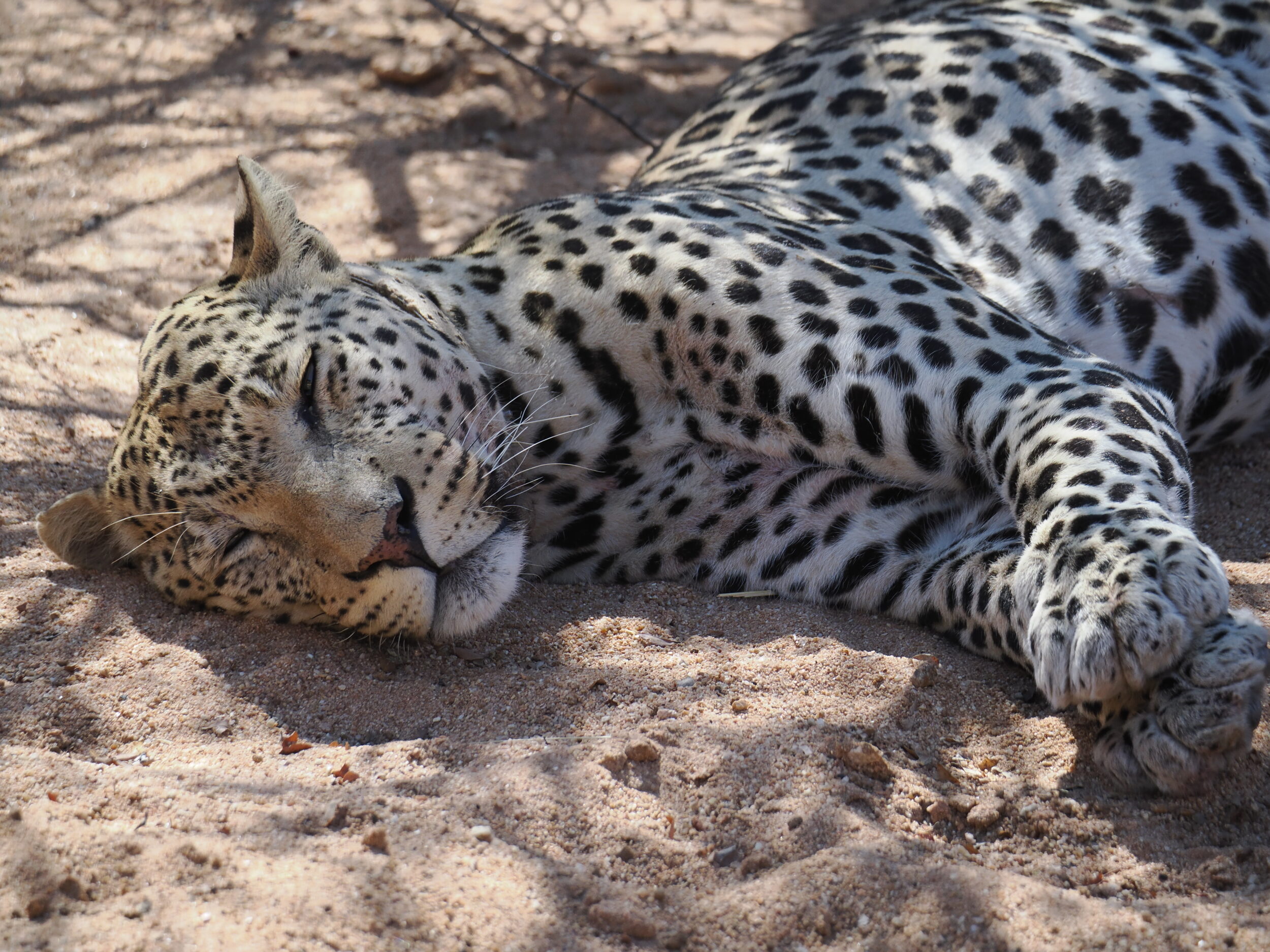
Footnote
If you have ever wondered just how many leopards now roam “our” planet, prepare to keep wondering…and do not too-readily accept any “facts” you read on the subject.
Any estimated “global” or “regional” or “national” figure is just that: an estimate.
if you look around the internet you will be told, variously, that the world is now home to circa 700,000 leopards….or circa 200,000… or circa 14,000…
The largest of those figures is almost certainly way too high.
The smallest of them is ludicrously low, certainly.
Namibia does not contain anything near to 80-90% of the world’s leopards.
The most recent serious attempt to work out the likely number of leopards in Namibia came up with a 2019 figure of 11,733.
That report acknowledged a “margin of error” of more than 5,000 above/below the nominal figure.
Leopard conservation is a very complicated matter, most especially when the conservation effort seeks to take proper account of both humans’ and leopards’ best interests.
Sloganeering/“virtue signalling” may boost the sloganeer’s self-esteem, but it won’t save leopards, nor deal humanely/sensibly with interspecies conflict.
It is worth knowing/remembering that a small-scale Namibian herder’s very livelihood can be wiped out by one leopard.
You may like to read this summary of the aforementioned report by its author.
Then, consider this article which looks at some of the hostile responses to her report.
A key fact which may surprise you:
Freehold farms support more leopards than national parks in Namibia
(and that is a fact…but be aware that a Namibian private conservation reserve – Okonjima, for instance – is a “freehold farm”)
